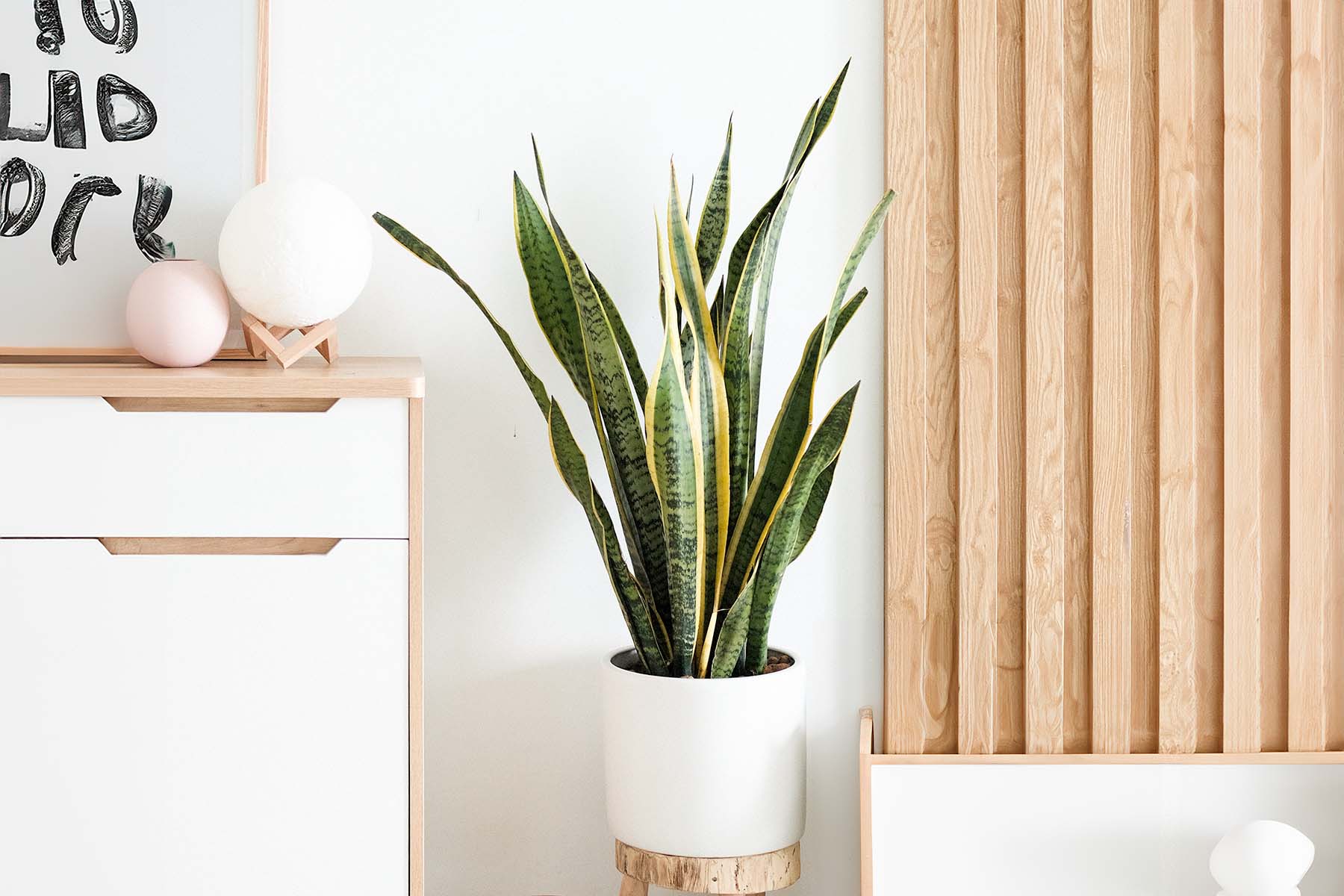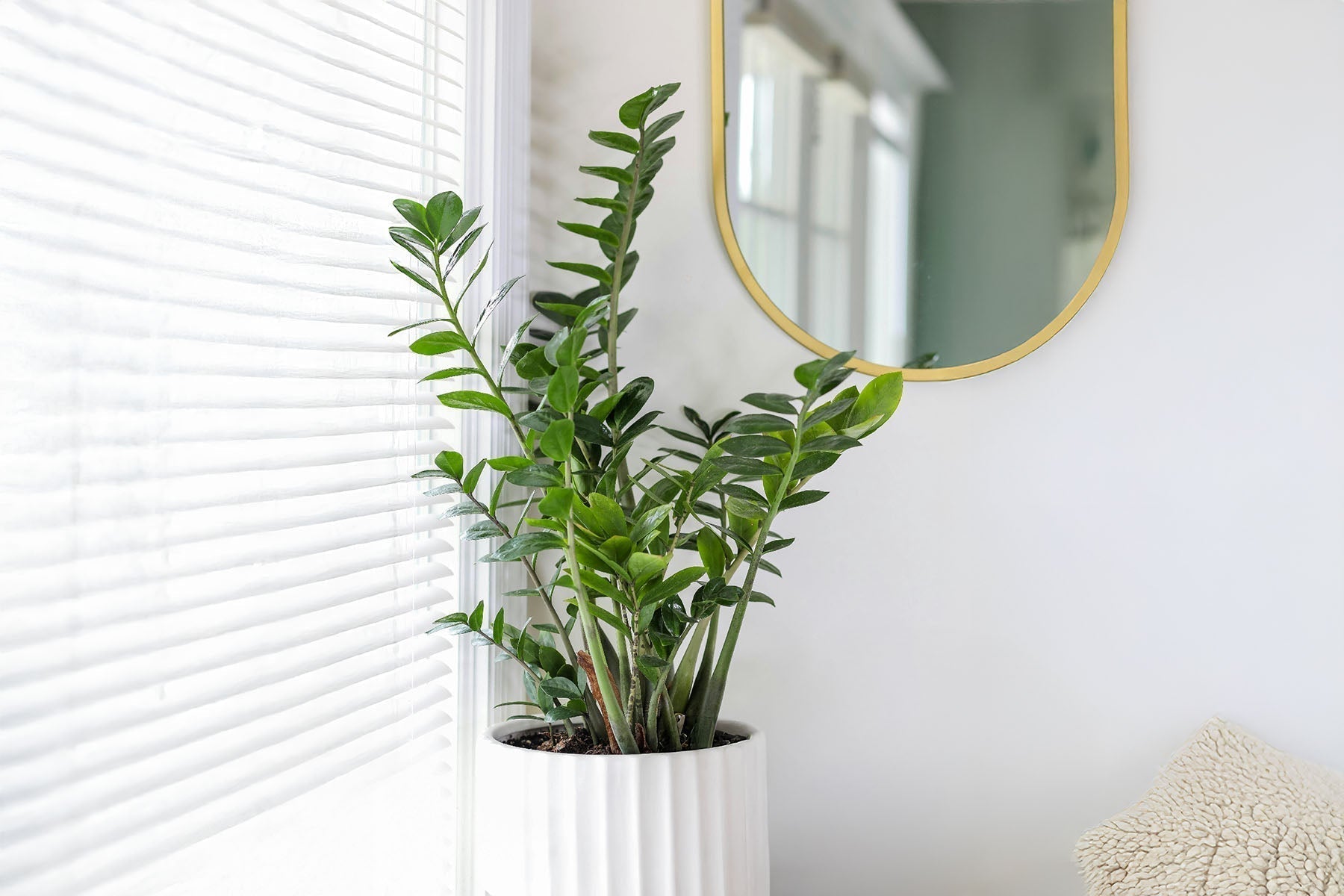
Plant Breakdown: The Difference Between Snake Plant Varieties
In the world of houseplants, there’s rarely a more versatile or low-maintenance option than the Snake Plant (now classified under the genus Dracaena, previously Sansevieria). Whether you’re a seasoned collector or a new plant parent, Snake Plants are an instant favourite thanks to their striking leaves, effortless care routine, and air-purifying qualities. But did you know there are dozens of varieties, each with subtle distinctions in shape, size, and coloration? If you’ve ever wondered exactly which Snake Plant you brought home—or if you need more than one—this comprehensive guide is here to help.
Often referred to as Mother-in-Law's Tongue, Snake Plants are popular for their hardiness, air-purifying qualities, and architectural appeal. Native to Africa, these plants have adapted to thrive in various conditions, making them ideal for both novice and seasoned plant enthusiasts.
In our Snake Plant Collection at JOMO Studio, we offer a wide range of Snake Plant varieties, each with its unique charm and character. Let's dive into some of the most popular and readily available Snake Plant varieties we sell, breaking down their unique characteristics based on leaf shape, coloration, and growth habit.
Snake Plant Varieties

Sansevieria Laurentii
Dracaena trifasciata 'Laurentii'One of the most recognizable Snake Plants, the Laurentii features tall, upright leaves with distinctive yellow edges. The center of each leaf displays horizontal dark green stripes on a lighter green background. Growing up to 3-4 feet tall, its striking appearance makes it a popular choice for adding height and colour contrast to indoor spaces.

Sansevieria Zeylanica
Dracaena trifasciata 'Zeylanica'Similar to Laurentii but without the yellow margins, Zeylanica showcases wavy, horizontal stripes of dark and light green across its leaves. The leaves are slightly narrower and can reach heights of 2-3 feet. Its subtle colouration and robust nature make it a versatile addition to any plant collection.

Sansevieria Starfish
Dracaena angolensis 'Starfish'A unique variety with short, tubular leaves that fan out from the base, resembling a starfish. The leaves are thick and cylindrical, with green-grey colouration and darker green concentric circles. It's a compact plant, perfect for small spaces and adds an exotic touch to your collection.

Sansevieria Fernwood Mikado
Dracaena hanningtonii 'Fernwood Mikado'Fernwood Mikado features slender, arching leaves that are dark green with lighter green markings. The leaves are cylindrical like the Starfish but thinner, giving it a grassy appearance. It's an excellent choice for those looking for a different texture in their plant collection.

Sansevieria Black Coral
Dracaena trifasciata 'Black Coral'Black Coral boasts deep, dark green leaves with wavy horizontal bands of lighter green. Which is the opposite of the Sansevieria Zeylanica. The dark colouration gives it a dramatic and elegant appearance. It's a taller variety, similar in height to Laurentii, and makes a bold statement in any room.

Sansevieria Moonshine
Dracaena trifasciata 'Moonshine'The Moonshine variety captivates with its broad, silvery-green leaves that have a subtle sheen, resembling moonlight reflecting off foliage. The leaves are wider and slightly shorter than those of Laurentii, typically growing up to 2 feet tall. As the plant matures, the leaves may develop darker green margins, adding to its allure.

Sansevieria Masoniana Whale Fin
Dracaena masoniana 'Whale Fin'Known for its large, paddle-shaped leaves, the Whale Fin is a real showstopper. Each leaf can grow up to 10 inches wide and 3-4 feet tall, featuring a mottled pattern of dark and light green spots. The plant typically grows a single leaf or a small cluster, making it a unique focal point.

Sansevieria Black Gold
Dracaena trifasciata 'Black Gold'Black Gold features deep green leaves bordered with bright golden-yellow margins, creating a dramatic contrast. The leaves grow upright and can reach heights of 2-3 feet. This variety adds a touch of elegance and sophistication to any indoor setting.

Sansevieria Bantel's Sensation
Dracaena trifasciata 'Bantel's Sensation'A rare and sought-after variety, Bantel's Sensation features narrow, upright leaves with elegant vertical white stripes running the length of the leaf. The leaves are thinner than other varieties, giving it a refined, delicate appearance. It grows up to 3 feet tall and adds a touch of sophistication.

Sansevieria Cylindrica Braid
Dracaena angolensis 'Cylindrica Braid'An artistic take on the Cylindrica, the leaves are braided together to create an ornamental effect. The cylindrical leaves are dark green with lighter bands and can grow several feet long. It's a conversation starter and adds a unique touch to your plant collection.
Snake Plant Benefits
- Air Purification:
- Filters toxins like formaldehyde, benzene, and trichloroethylene.
- Improves overall indoor air quality.
- Oxygen Production:
- Unlike most plants, Snake Plants release oxygen at night.
- Beneficial for bedrooms to enhance sleep quality.
- Aesthetic Appeal:
- Versatile designs fit modern, traditional, and eclectic interiors.
- Architectural lines add visual interest.
Snake Plant Care Guide
Not only are they beautiful, but Snake Plants are also some of the easiest houseplants to care for. Here's how to keep them thriving in your home.
Lighting:
Snake Plants are highly adaptable when it comes to light conditions.
- Ideal Light:Bright, indirect light.
- Tolerated Light:Low light to direct sunlight.
- Note:While they can survive in low light, growth will be slower, and variegation may be less pronounced. Avoid prolonged exposure to intense, direct sunlight, which can scorch the leaves.
Watering:
Overwatering is the most common issue with Snake Plants.
- Spring/Summer:Water thoroughly when the soil is almost completely dry.
- Fall/Winter:Reduce watering frequency, allowing the soil to dry out completely between waterings.
- Tip:The thick, succulent leaves store water, so it's better to underwater than overwater.
Humidity:
Snake Plants are not fussy about humidity.
- Humidity Needs:Average home humidity is sufficient.
- Note:They tolerate dry air well, making them perfect for heated homes in winter.
Fertilizing:
Snake Plants are light feeders.
- Growing Season (Spring/Summer):Fertilize once a month with a balanced liquid fertilizer diluted to half strength.
- Dormant Season (Fall/Winter):Fertilization is not necessary.
Toxicity:
Snake Plants are mildly toxic if ingested.
- Caution:Keep away from pets and small children. Ingestion can cause nausea, vomiting, or diarrhea due to saponins in the plant.
Propagating:
Although they can be propagated, just remember that they are slow growers, so be patient.
- Division:The easiest method. Remove the plant from its pot and separate the root rhizomes. Each division should have at least one healthy leaf and root system.
- Leaf Cuttings:Cut a healthy leaf into 2-3 inch sections. Allow the cut ends to callous over for a day or two. Plant the cuttings upright in moist, well-draining soil.
FAQs
Q: Are Snake Plants safe for pets and children?
A: Snake Plants are mildly toxic if ingested due to saponins, which can cause gastrointestinal discomfort. It's best to keep them out of reach of pets and young children.
Q: How often should I water my Snake Plant?
A: Watering frequency depends on the environment. Generally, water every 2-6 weeks, allowing the soil to dry out completely between waterings. In low light or cooler temperatures, water less frequently.
Q: Can Snake Plants grow in low-light conditions?
A: Yes, Snake Plants are highly adaptable and can survive in low-light areas. However, they grow faster and maintain better coloration in bright, indirect light.
Q: How do I propagate my Snake Plant?
A: Propagation can be done through leaf cuttings or division. Leaf cuttings can be rooted in water or soil, while division involves separating rhizomes during repotting.
Q: Why are the tips of my Snake Plant turning brown?
A: Brown tips can result from underwatering, low humidity, or excess salts from over-fertilizing. Adjust watering habits, check humidity levels, and flush the soil if over-fertilization is suspected.
Snake Plants are a fantastic addition to any indoor space, offering a variety of shapes, sizes, and colours to suit your personal style. Whether you're drawn to the classic look of the Laurentii, the silvery elegance of Moonshine, or the unique form of the Whale Fin, there's a Snake Plant that's perfect for you.
Not only do these plants elevate your home's aesthetic, but they also contribute to a healthier living environment. With minimal care requirements, Snake Plants are an excellent choice for both beginners and seasoned plant enthusiasts.
We hope this clears up any questions you may have had about these beautiful houseplants. No matter how similar the different varieties look, they all have their own slightly different growth patterns or leaf shapes, so just because you own one, that doesn't mean you don't need them all!






